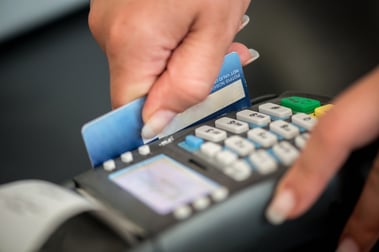
It’s just another night out with family and friends as you stop and have a bite to eat at your favorite local restaurant. Everything seems normal as the waitress comes over and hands you the bill.
But this restaurant has adopted the new technology in place at many establishments, and the waitress points you to the new payment system that is on your table. There you can pay your bill by yourself - no longer handing important credit card information over to a complete stranger.
New technology is not always proven right from the start. These payment systems are like an invitation to hackers as they start targeting more and more restaurants.
But, what can restaurants do to protect themselves against hackers?
The Chipotle Hack
In an article by Cyber Scoop, we learned Chipotle recently suffered a major security breach; hackers have also gone after Baja Fresh and Ruby Tuesday.
In regards to the Chipotle attack, hackers used a phishing email describing a nonexistent overdue payment and encouraged the person to open the attachment. The email sender was listed as Michael Smith, an imaginary manager for a nonexistent company named Slazzer LLC.
In all, more than 20 U.S. based hospitality companies, which include hotels and restaurants, have been successfully hacked since the summer of 2016.
Restaurant owners are trying to find answers as they continue to make patrons safe.
It's a Credit Card Society
A recent survey conducted by NextAdvisor.com asked 500 people, 18 years and older, what they would prefer to pay with when going out.
- 42% of respondents prefer to pay with a debit card
- 38% reach for their credit card
- 17% expressed a preference for cash
- 3% write a check
 Another study by Toast showed that consumers like to use their credit or debit card 76% of the time when they go out to restaurants - especially when they are paying for higher cost items versus a smaller item, like a cup of coffee.
Another study by Toast showed that consumers like to use their credit or debit card 76% of the time when they go out to restaurants - especially when they are paying for higher cost items versus a smaller item, like a cup of coffee.
Each transaction is putting your business and customers at risk if you are not using the proper technology, which is the biggest reason why credit card processing continues to be a major area of interest for hackers that are looking to access customer payment card information. Out of all the credit card breaches made public in the last several years, not many (if any) companies were truly PCI compliant.
Now that restaurant owners know hackers are coming after them more frequently, it’s up to them to better prepare their companies.
Combating Security Risks
When you own a business, it not easy protecting against every little thing that might come your way. Business owners tend to worry about the bigger things like payroll, making sure employees are happy, and that the business is making the money.
The last thing owners may think of is security. Hackers, of course, take advantage of this weakness. In their recent article, Chain Storage, lists four ways to beef up your cyber security now that attacks are on the rise in the industry.
4 Four Tips to Beef Up Restaurant Cyber Security
- Become PCI (Payment Card Industry) compliant - To do this, you need to follow a set of standards to “ensure that all companies that accept, process, store or transmit credit card information maintain a secure environment.” Being compliant adds an extra blanket of security.
- Protect payment information with credit card encryption - Like any good thief, hackers love a good trail - so don’t leave any food for them to follow. Point of Sale systems (POS) now feature immediate encryption for credit card information when the card swipes. This basically means that all data is transferred through the credit card transaction process securely.
- Choose cloud-based systems for secure data storage - Cloud-based POS systems have made a huge impact on the restaurant industry. They offer more convenient features and are remarkably easy to use. They are also far more secure than legacy POS systems when it comes to protecting data.The advantage to cloud POS systems is that once the transaction takes place, the data is encrypted and stored off-site, and moves onto the next step of the transaction. With a legacy system, information is stored in the system itself, which makes the data much more vulnerable as it can far too easily be accessed by the wrong person.
- Update and evolve to stay ahead of hackers - The best thing about technology is that it is always evolving - which means you need to be one step ahead of the people trying to hack your systems.
Close the Backdoor
Hackers are always trying to find a backdoor to your data, which means trying to protect the data is that much harder. For companies without a dedicated IT Security Team, considering using the services of a managed security services provider is a logical option.
The truth is, we live in a world where cyber threats, credit card hacks and identity theft are the new norm. It’s a reality that every business needs to come to grips with.
When you’re shopping for an MSSP to partner with, consider the challenges they may have faced or may currently be facing,“If they were once a solution vendor.” The more questions you ask, the better your eventual decision will be.
For more information on how to make use your data is secure, check out our white paper Protecting the Data:5 Tools to Fight Against Today's Threats
